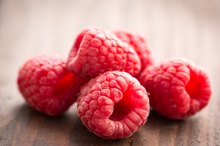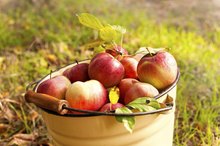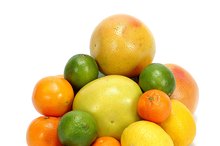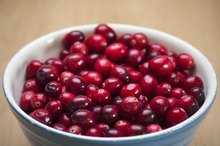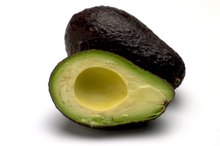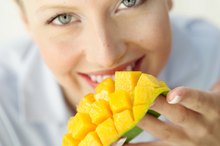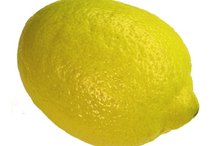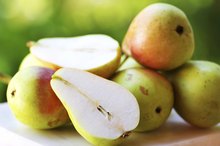What does fact checked mean?
At Healthfully, we strive to deliver objective content that is accurate and up-to-date. Our team periodically reviews articles in order to ensure content quality. The sources cited below consist of evidence from peer-reviewed journals, prominent medical organizations, academic associations, and government data.
The information contained on this site is for informational purposes only, and should not be used as a substitute for the advice of a professional health care provider. Please check with the appropriate physician regarding health questions and concerns. Although we strive to deliver accurate and up-to-date information, no guarantee to that effect is made.
Sucrose Levels in Fruit
Fresh fruits taste exceptionally sweet due to the high levels of sugars they contain. Not all fruits contain the same amount or type of sugar. Some fruits contain high levels of sugar, others hardly any at all. Some fruits contain mostly sucrose, while other high-sugar fruits contain no sucrose at all 1. When a fruit does contain sucrose, the amount of that sucrose can rapidly increase during ripening, which may, in part, explain why ripe fruits taste sweeter than under-ripe fruits 1.
Sucrose Chemistry
Sucrose consists of two different single sugar units joined together 1. Known as a disaccharide -- "di" meaning "two" and "saccharide" meaning "sugar" -- sucrose consists of a glucose sugar molecule linked to a fructose sugar molecule 1. When sucrose breaks down, a one-to-one mixture of glucose and fructose forms 1. Honey contains this one-to-one glucose-to-fructose mixture due to an enzyme in bees called invertase that specifically breaks down sucrose into its component sugars 1. Fruits and vegetables contain all three of these sugar molecules in various ratios.
High Sucrose Fruits
What Fruits Are High in Dextrose?
Learn More
Many fresh fruits contain high levels of sucrose, including nectarines, mangoes, jackfruit, peaches, cantaloupe, apricots and bananas 1. Sucrose makes up about 73 percent of the 8.5 grams of total sugar in 100 grams of fresh apricots and about 67 percent of the 14.8 grams of total sugar in 100 grams of mangoes 1. Bananas contain 15.6 grams of total sugar, but sucrose makes up only 42 percent of that total 1.
Low Sucrose Fruits
Many fruits contain very low levels of sucrose, either having a low sugar content overall or containing more glucose and fructose as individual sugar molecules rather than linked in the disaccharide 1. Avocados have a very low sugar content overall, containing only 0.9 grams of sugar in 100 grams of fruit. Of that 0.9 grams, sucrose comprises only 11 percent, or about 0.1 gram 1. Tomatoes only contain 2.8 grams of total sugar, none of which is sucrose 1. Limes are also low in overall sugar, containing only 0.4 grams of total sugar in 100 grams, none of which is sucrose 1. Fruits low in sucrose but having a relatively high total sugar content include sweet cherries 1. Of the 14.6 grams of total sugar in 100 grams of sweet cherries, sucrose comprises only 1 percent of that, about 0.2 gram 1.
Dried Fruit
Three Types of Sugars
Learn More
Dried fruits contain more fruit per gram than fresh fruits. For example, 100 grams of dates contain 64.2 grams of total sugar. Of that, sucrose comprises almost 70 percent or 44.6 grams 1. Dried peaches contain 44 percent sucrose 1. Other dried fruits, such as raisins, contain very little sucrose if any at all 1. About 100 grams of golden raisins contain 70.6 grams of total sugar, 1 percent or 0.8 grams of which is sucrose 1. Purple raisins do not contain any sucrose 1.
Sucrose Metabolism in Fruit
Many of the high-sucrose containing fruits only contain high levels of sucrose when ripe 1. Just prior to ripening, the activity of an enzyme called sucrose phosphate synthase increases about 10-fold and remains constant throughout the ripening period 1. This enzyme helps synthesize sucrose 1. The increased activity of this enzyme in mangoes leads to rapid sucrose accumulation in the ripened mango 1. Invertases, the enzymes that convert sucrose into its component fructose and glucose molecules, activate before the ripening process, but decrease activity during ripening, further contributing to the high sucrose, low fructose/glucose content in mangoes 1.
Related Articles
References
Resources
Writer Bio
Robin Wasserman has been writing and prosecuting biochemical patents since 1998. She has served as a biochemical patent agent and a research scientist for a gene-therapy company. Wasserman earned her Doctor of Philosophy in biochemistry and molecular biology, graduating from Harvard University in 1995.
